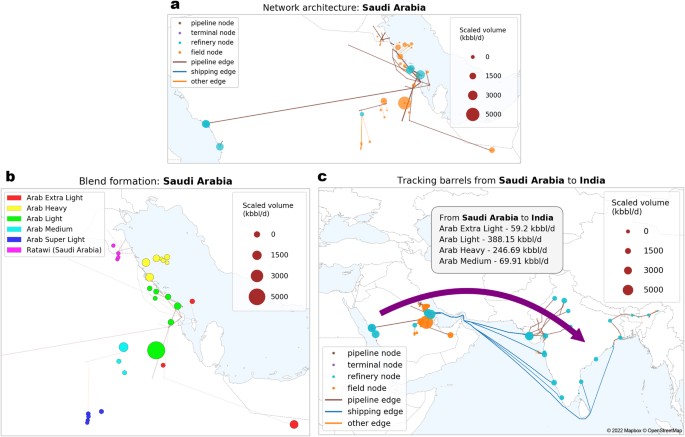Study Finds Large Variability in Carbon Intensity of Crude Oil Supply Chains, Enabling Emissions Reductions Through Market Mechanisms
-
Petroleum fuels account for 32% of global energy but their production and transport accounts for ~1.9 Gt/year of CO2 emissions. There is heterogeneity in the carbon intensity (CI) of different crude oil supply chains.
-
This study does a high-resolution life cycle assessment, tracing crude oil from individual fields through blending and transport to refineries. It finds CI ranging from 0.74 - 39.41 gCO2/MJ with an average of 9.01 gCO2/MJ.
-
There is significant variability in CI between blends and between transportation routes. Tracking to refineries shows wide variability from 8.84 - 86.39 kgCO2/bbl.
-
The granularity of the analysis can enable policies to differentiate crudes based on CI, incentivizing low-carbon crude production and transport. Modeling shows this could reduce emissions by 1.5-6.1 Gt through 2050.
-
Improved emissions data reporting and integration with models like this can enhance accuracy. Market mechanisms using CI can shift crude pricing and supply curves to cut emissions beyond process improvements.
